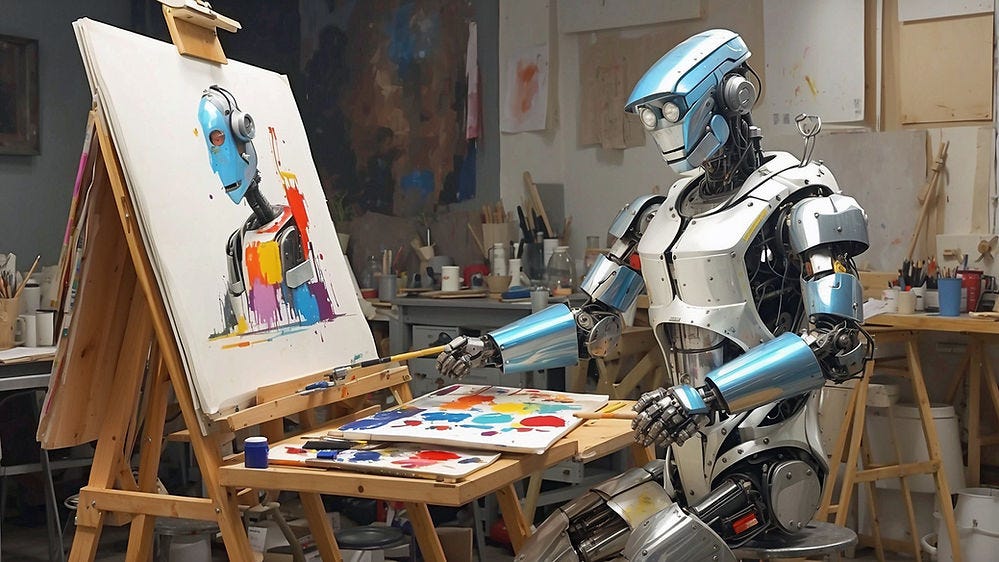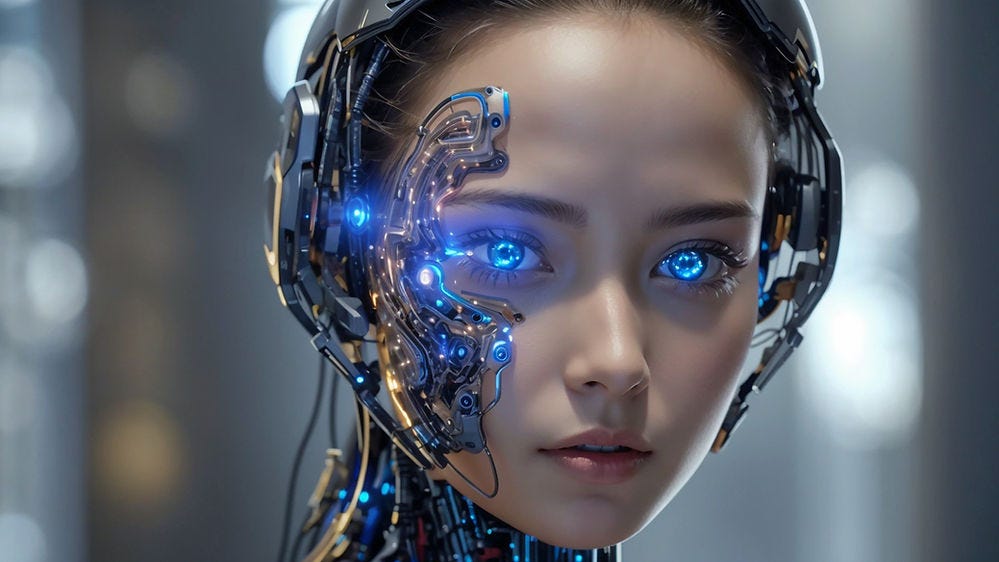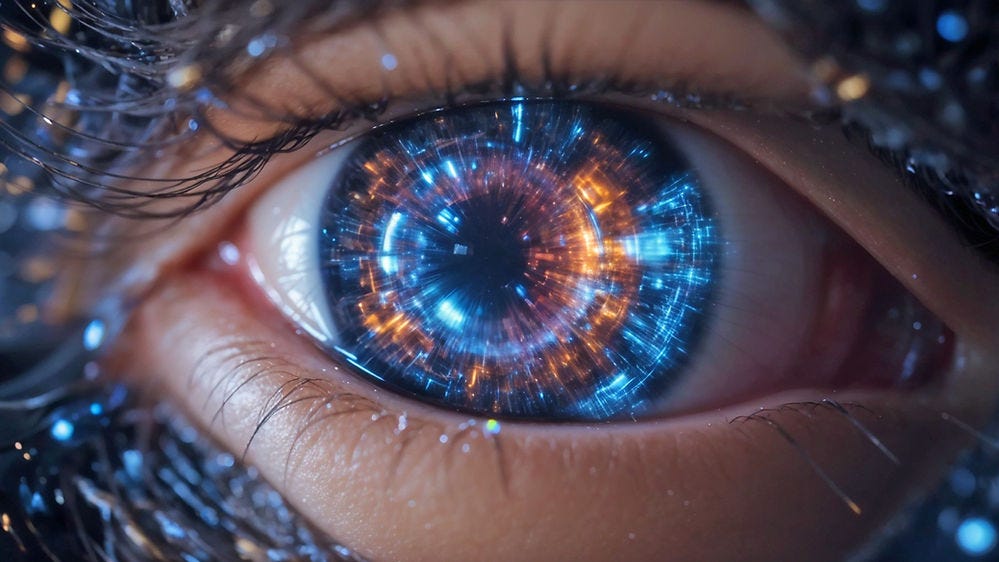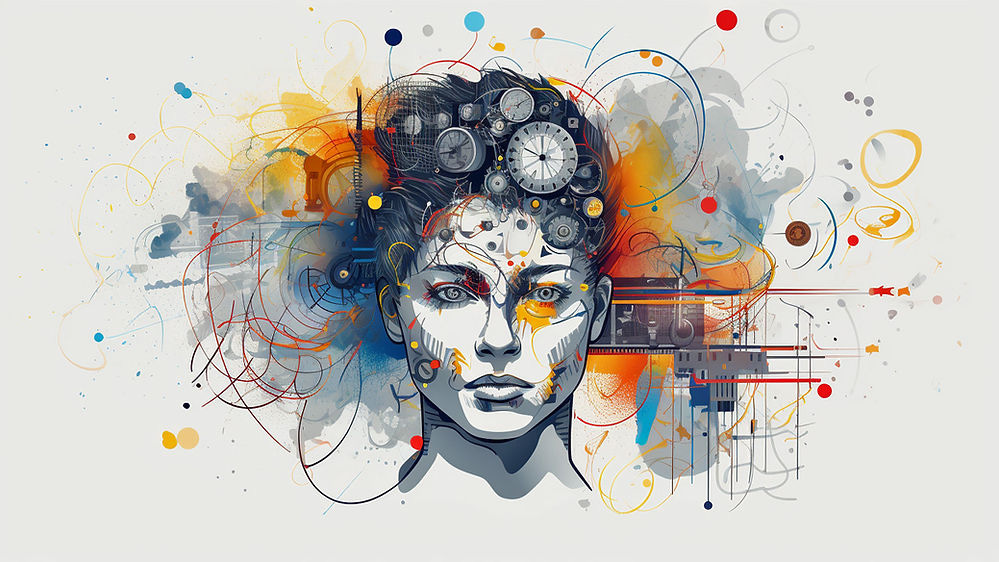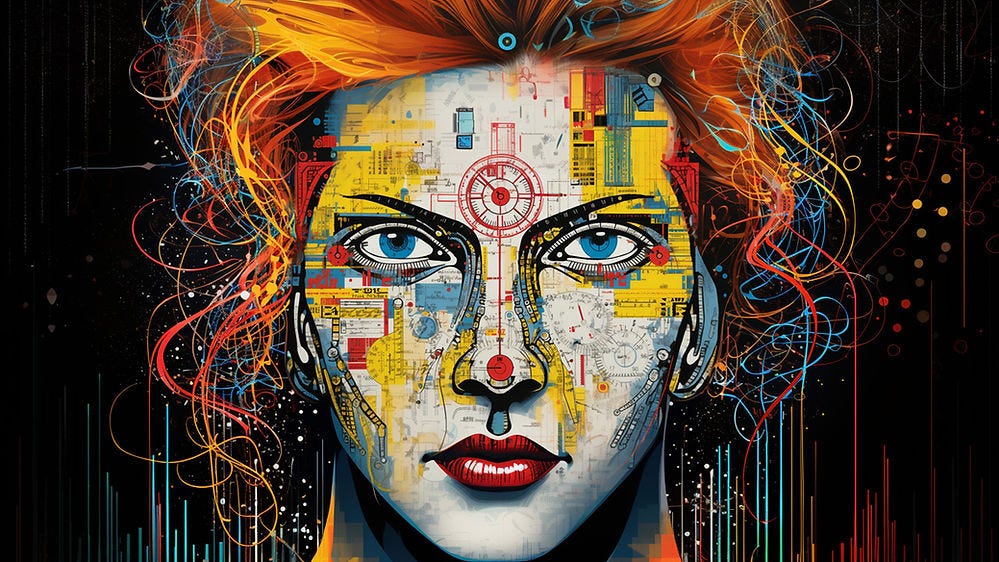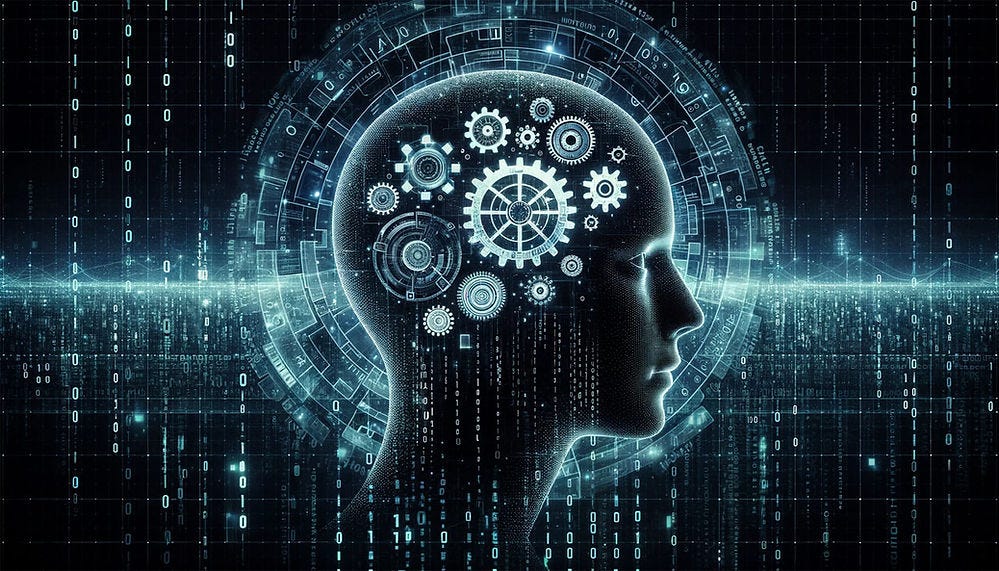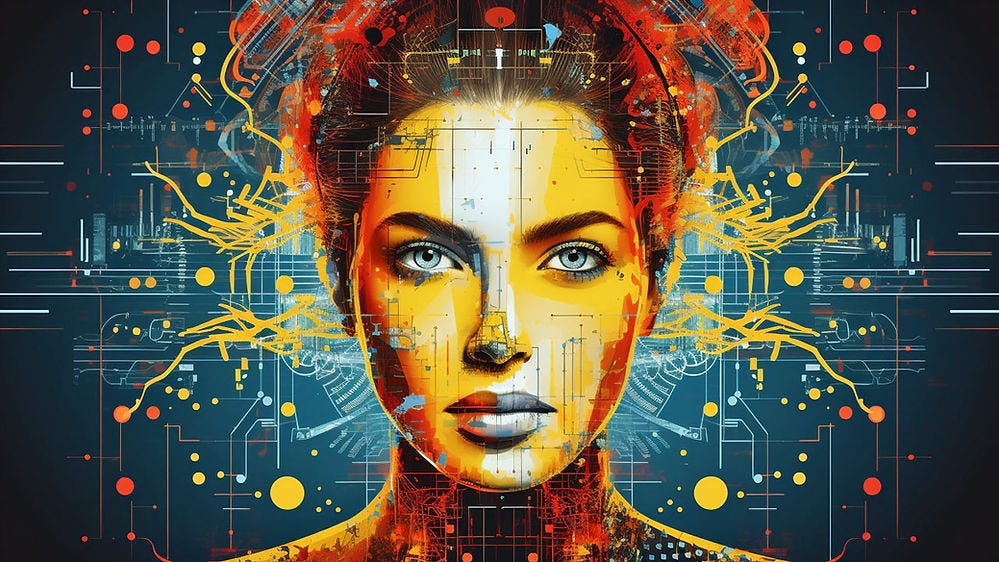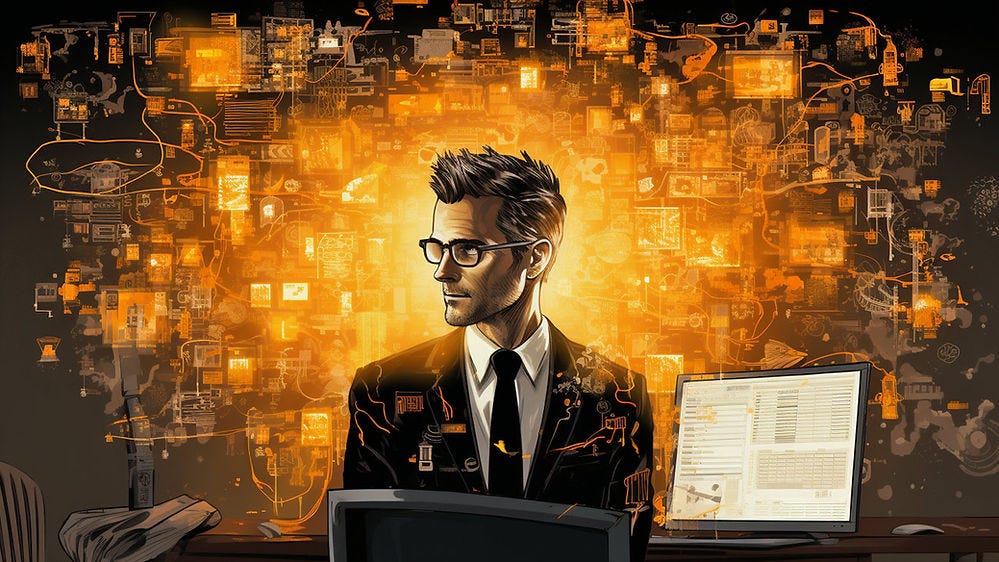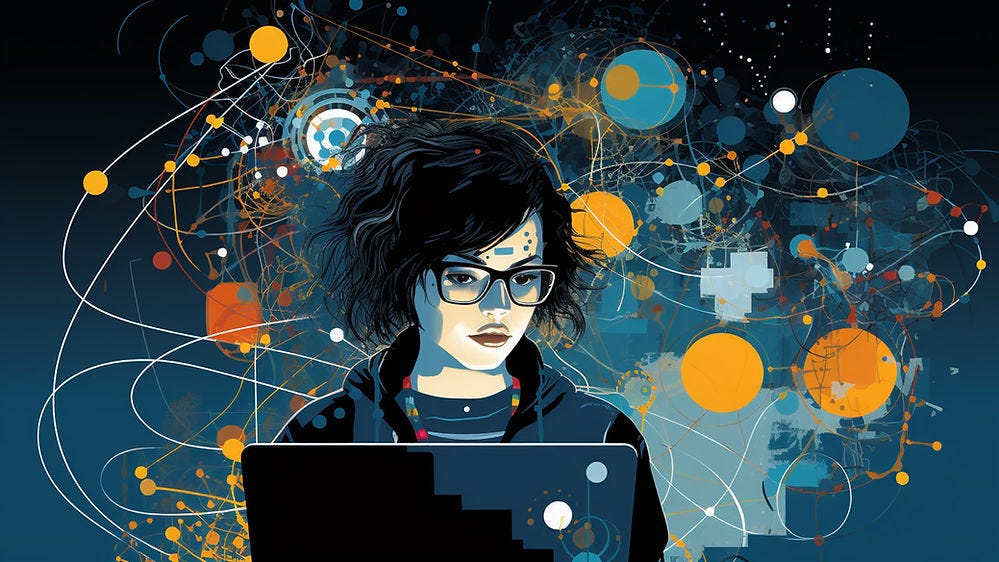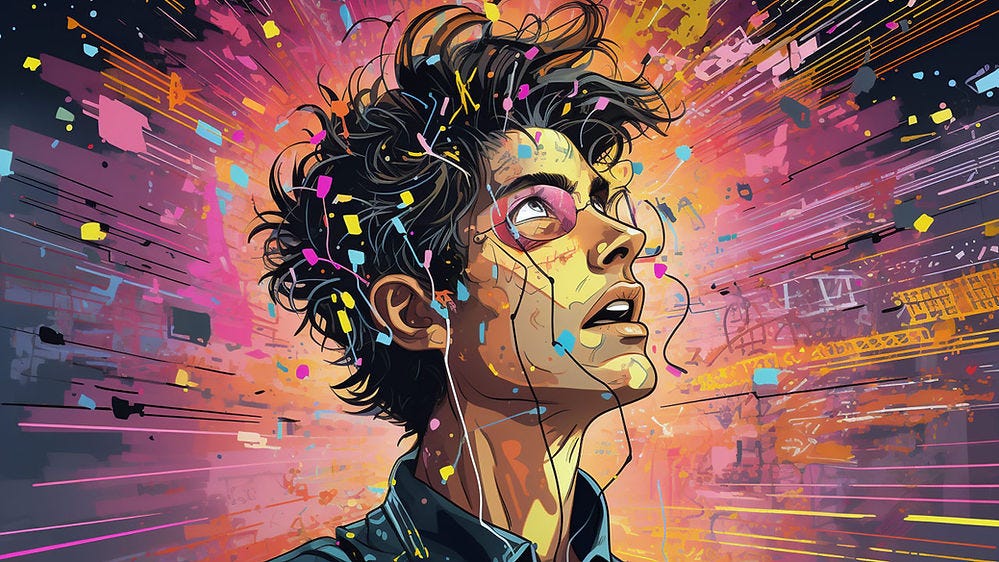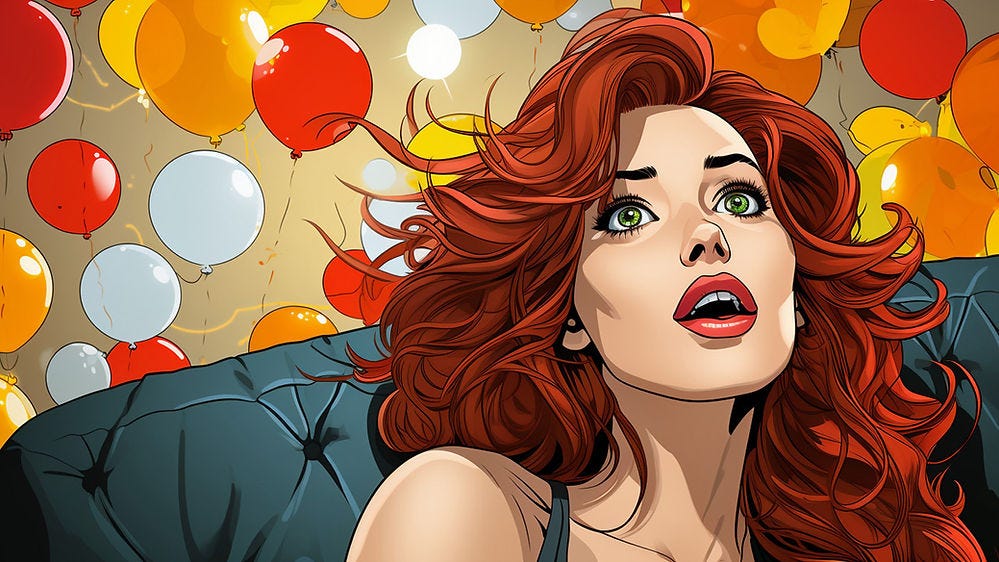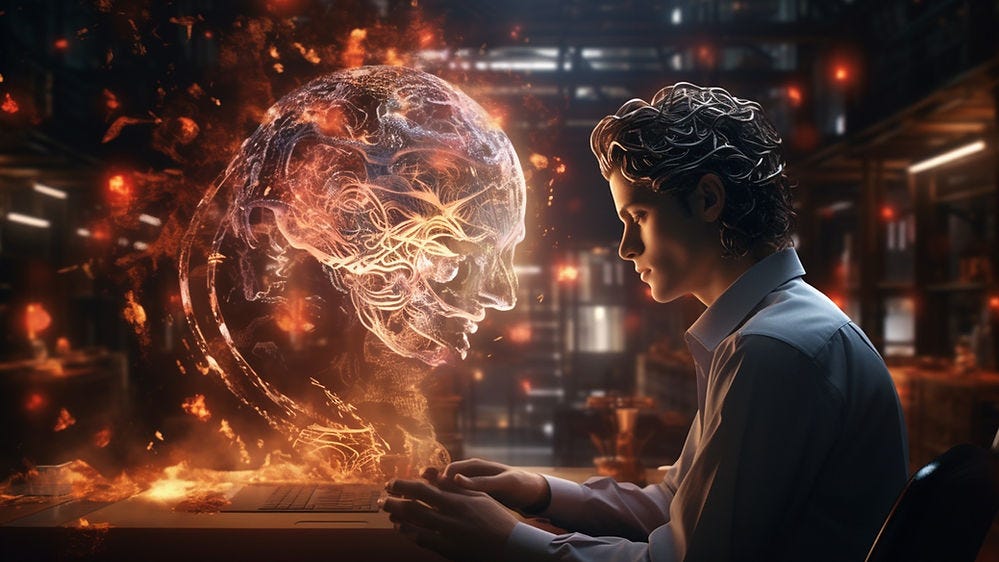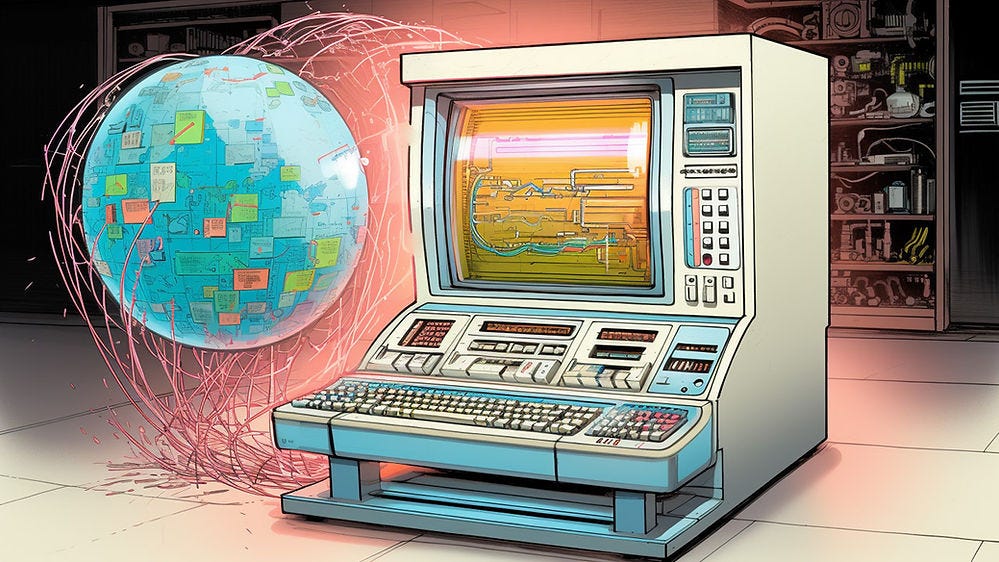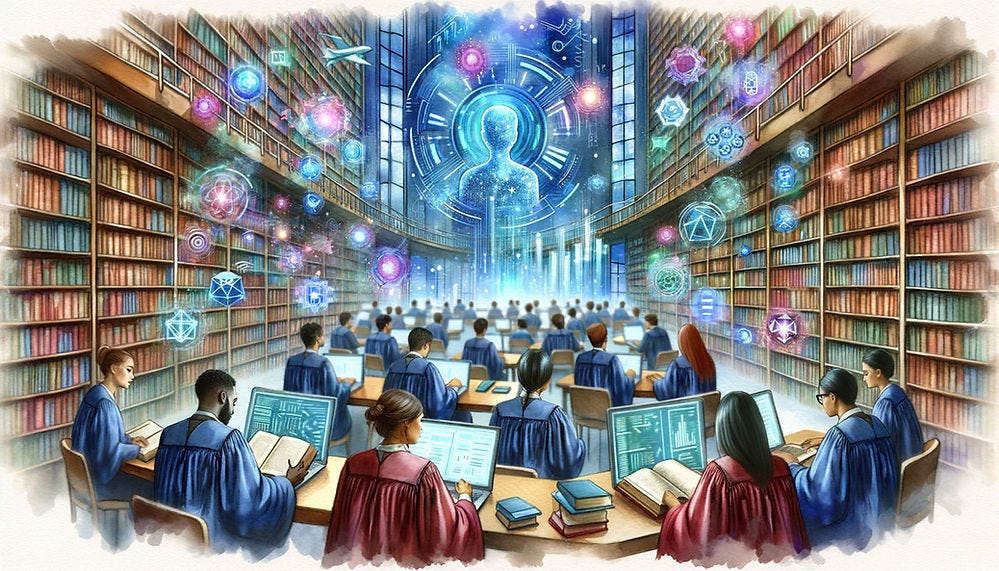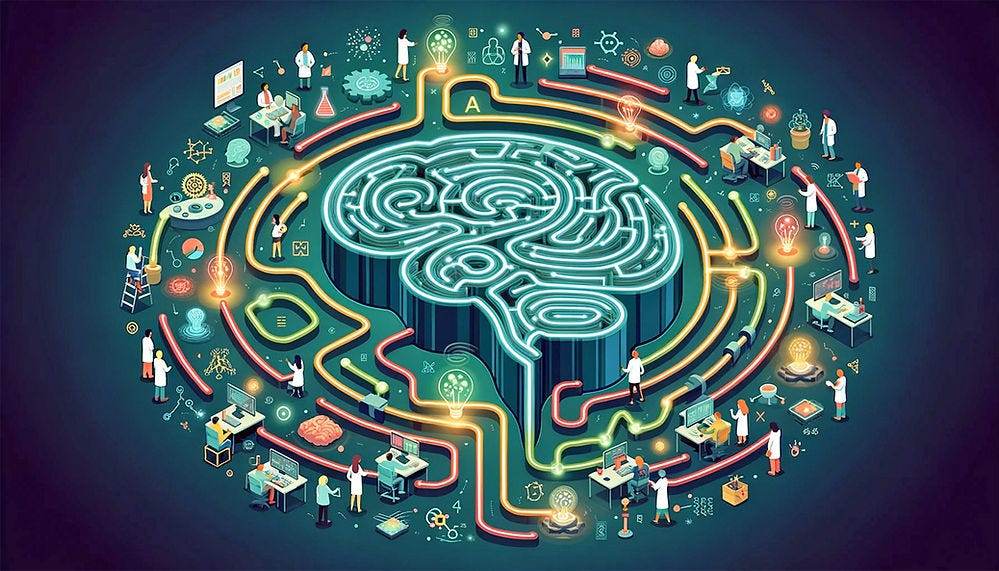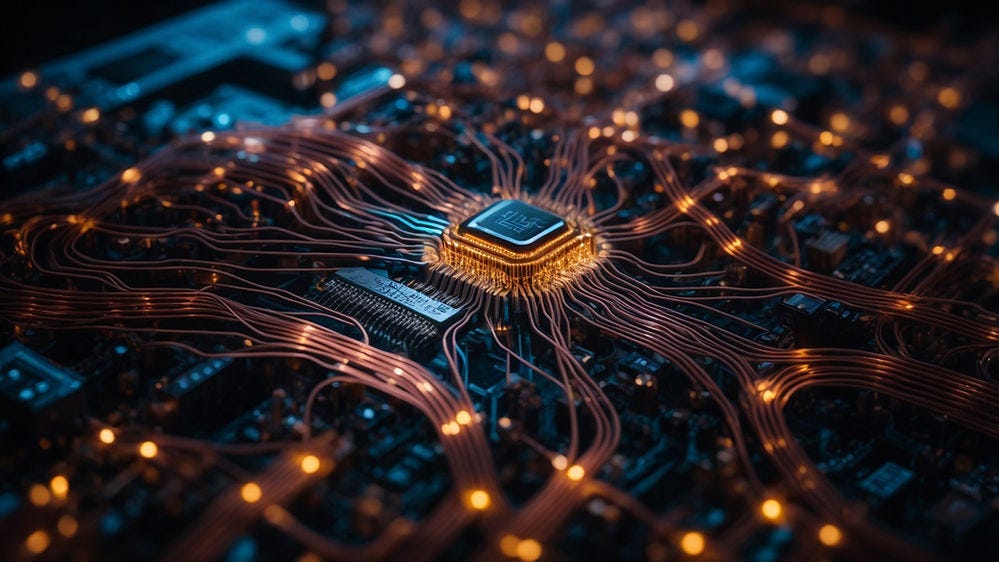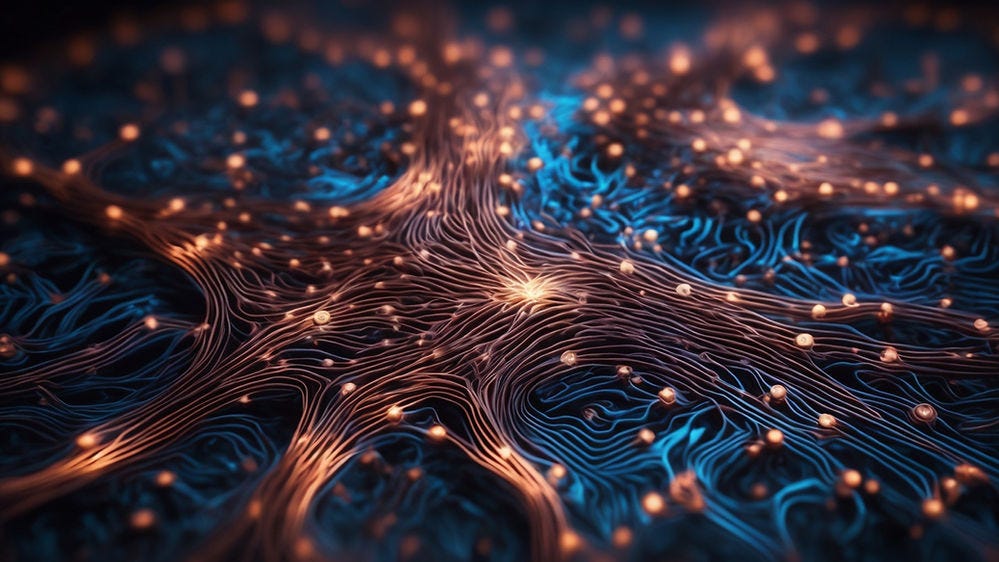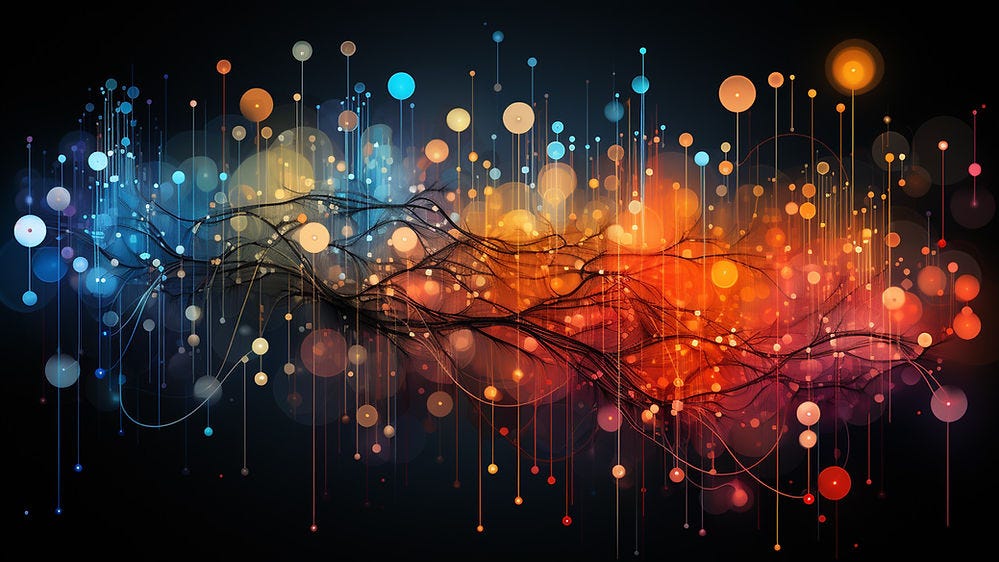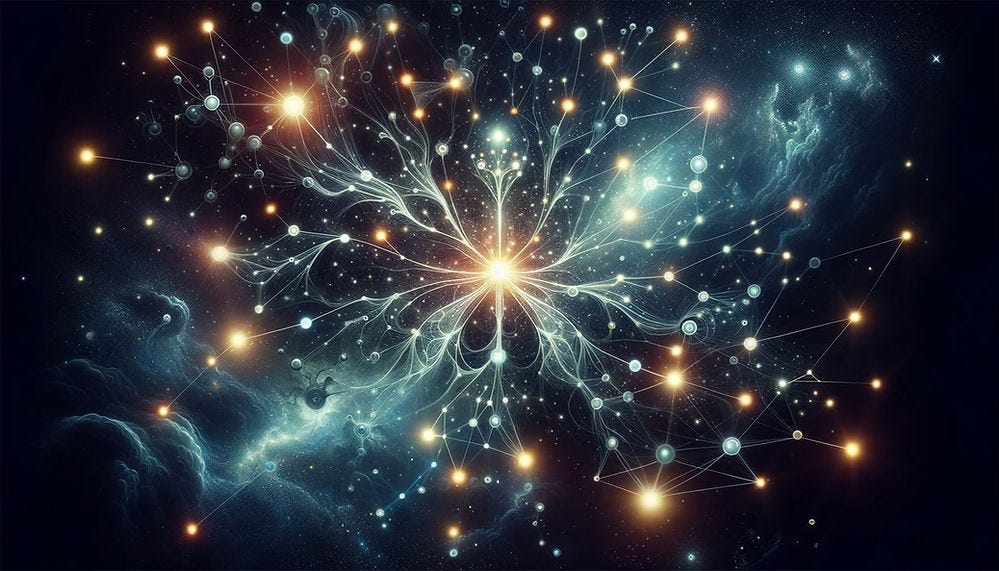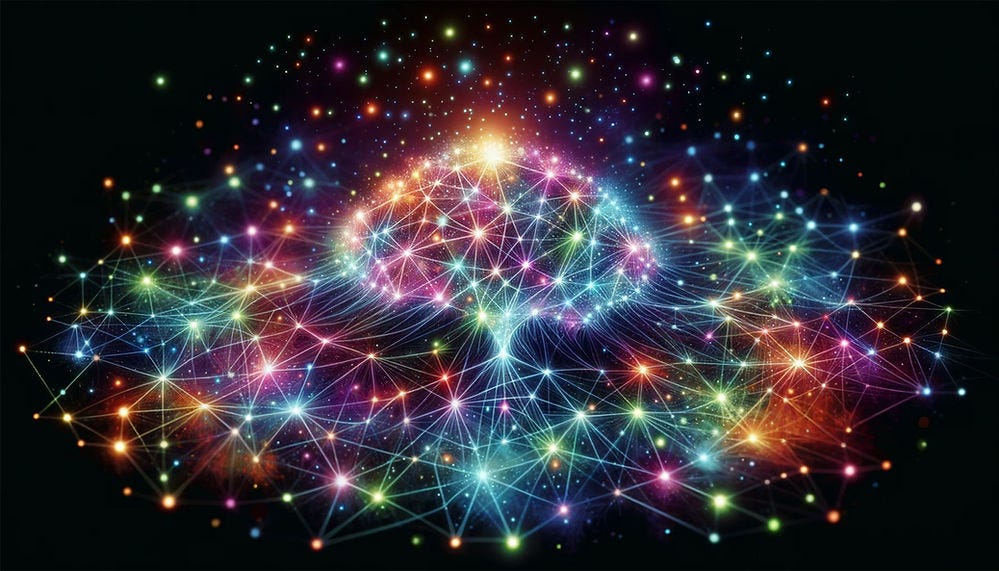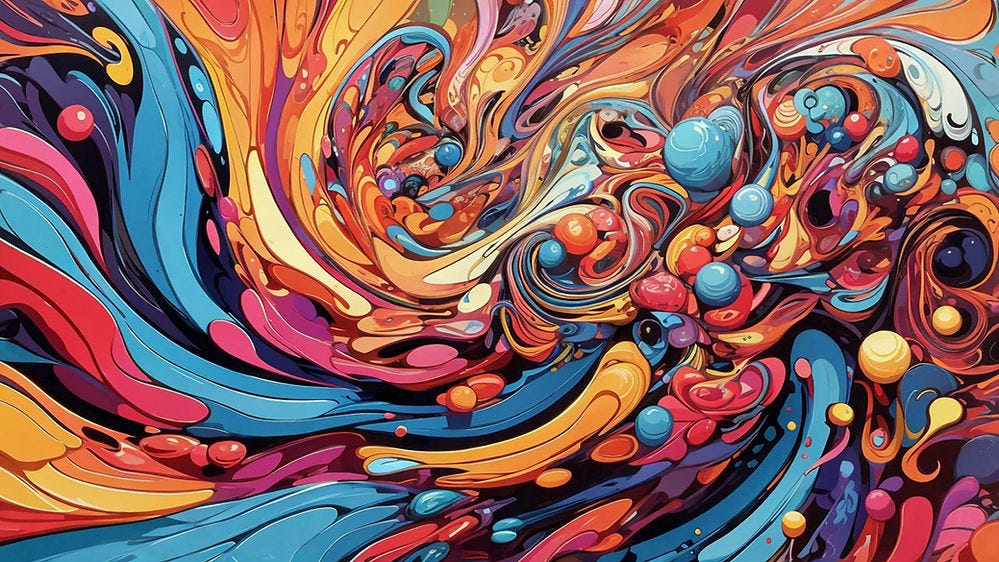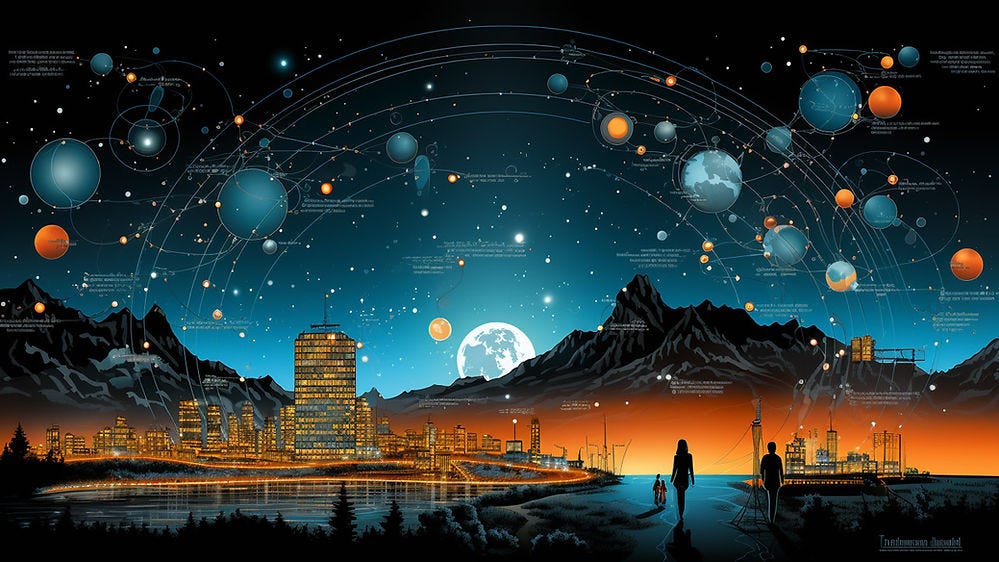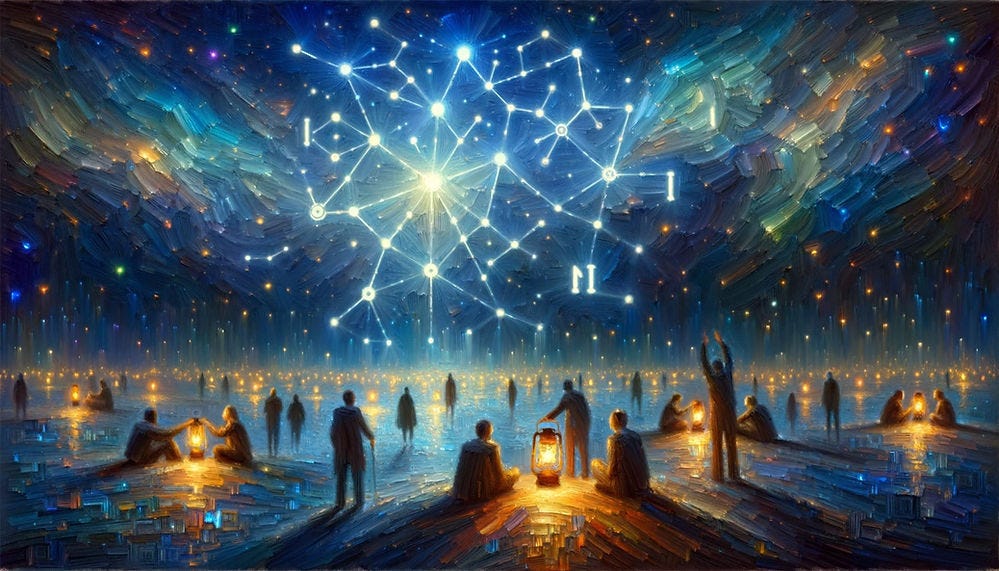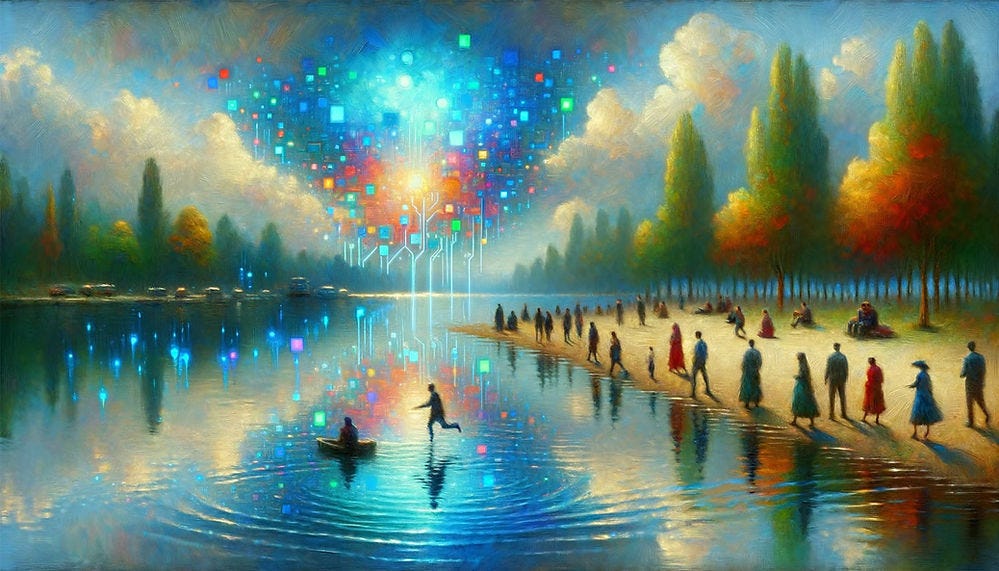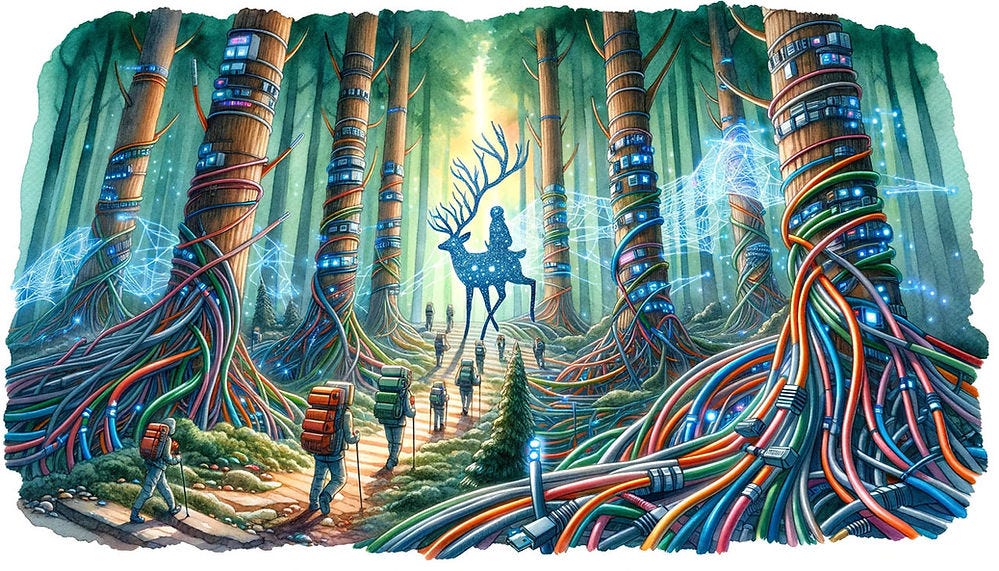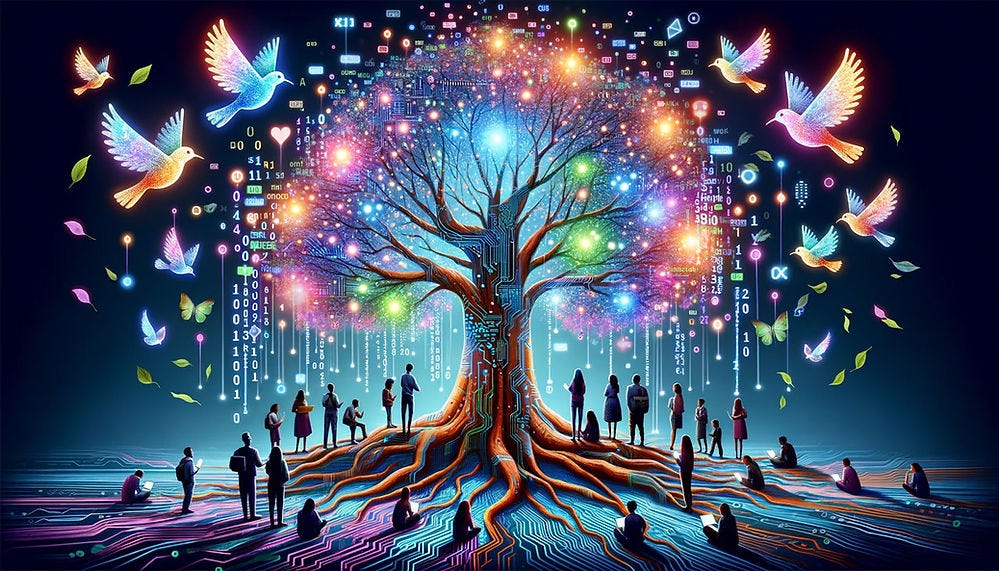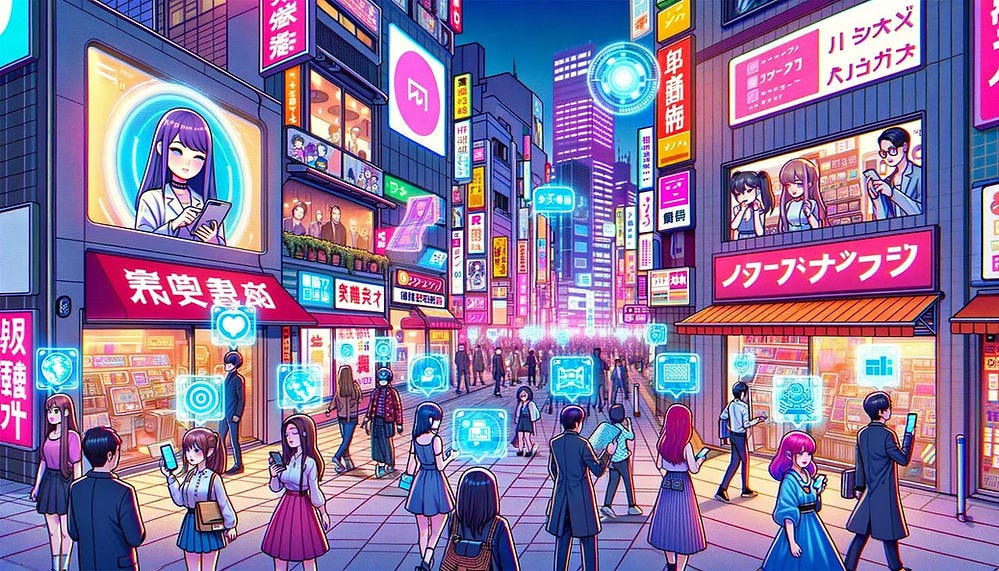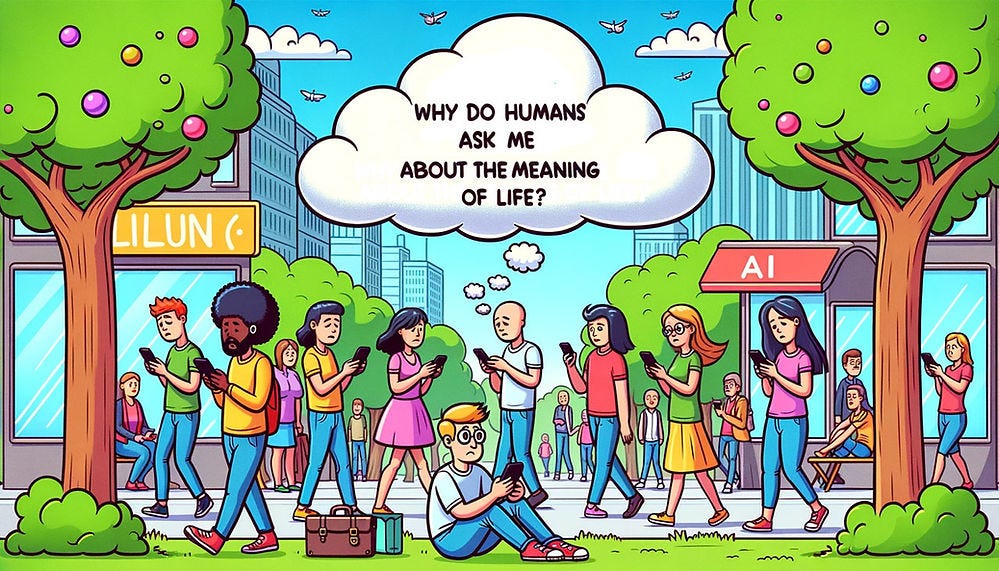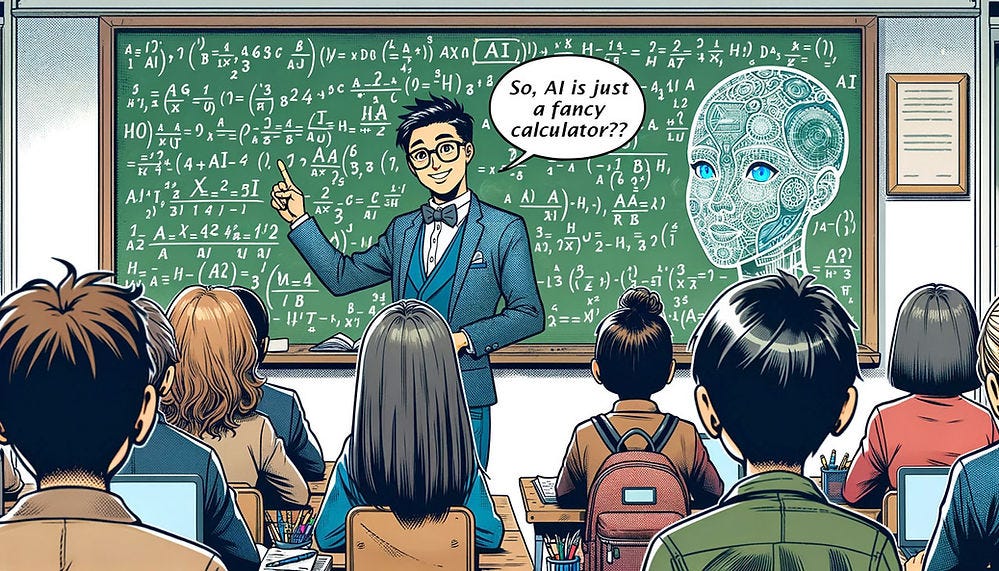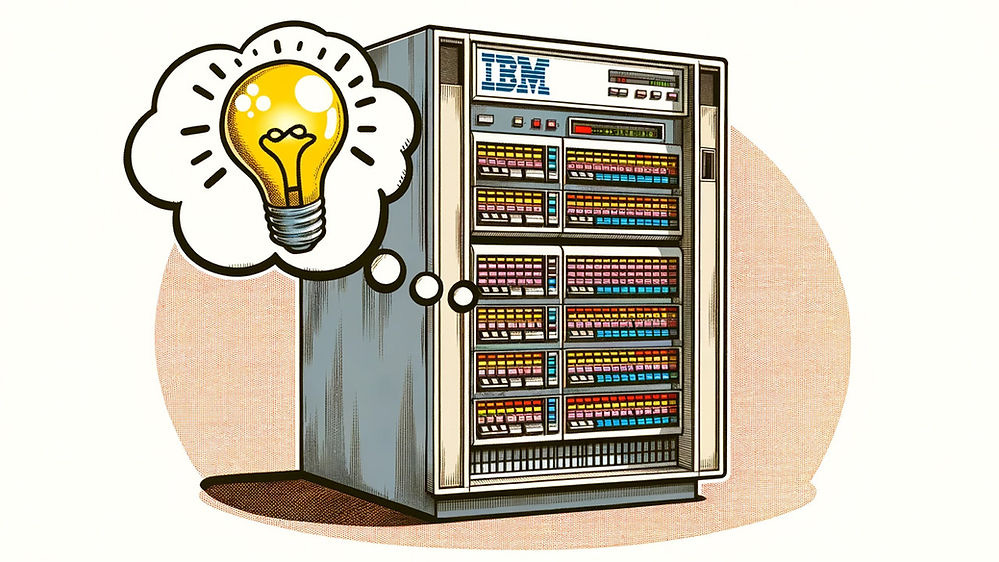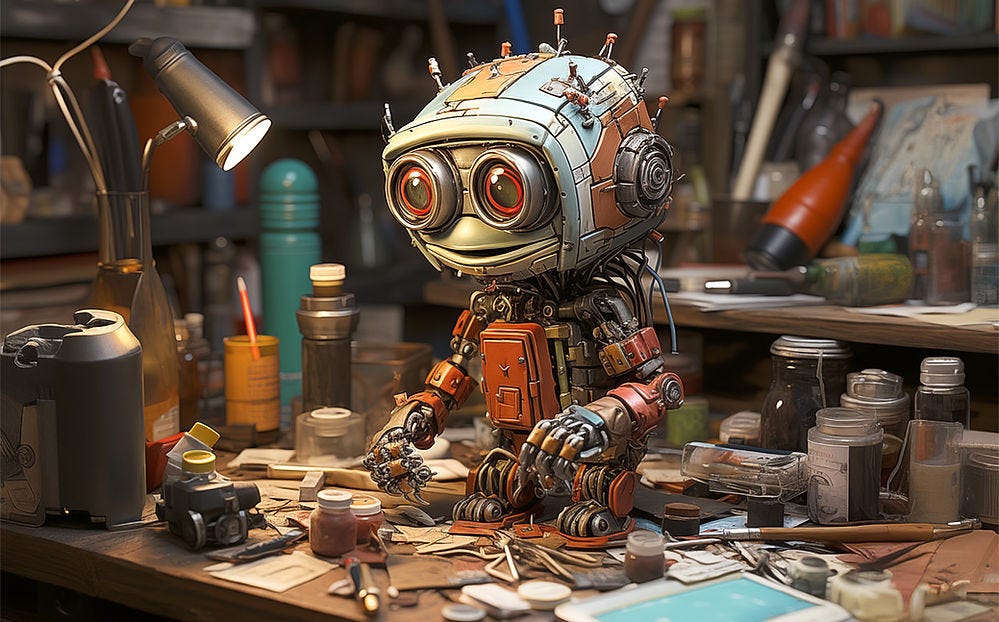AI Visualizing AI: Beyond the Robot Stereotype
Summary: I put AI creativity to the test by challenging 3 leading generative models to conceptualize “artificial intelligence” without resorting to the overused image of AI as a robot.
Many studies have found that AI exhibits high creativity that often surpasses most humans. The speed and efficiency with which AI generates a multitude of creative options make it evident that ideation is free with AI. The challenge is not to get new ideas but to choose the best idea from the deluge created by AI.
I decided to put a creativity challenge to the main generative AI tools for visual design, Dall-E, Leonardo, and Midjourney. Can they create compelling visuals for the concept of “artificial intelligence” without the trite cliché of showing AI as a robot? Let’s see how they did.
The illustrations in this article were mostly generated from simple prompts along the lines of “a line drawing of artificial intelligence --no robot.” (Alternating between asking for a variety of art styles.)
The cliché found in most articles about AI, including mine, visualizes AI as a robot. In this article, I ask AI to flex its visual design muscles and create visualizations of “artificial intelligence” that go beyond this cliché. (Robot painting a robot, by Leonardo.)
Augmented Humans
We’re still in the realm of clichés, but at least without robots per se. Many visualizations presented some form of augmented humans, or what I call symbiants, who integrate human judgment and AI fecundity.
Symbiant by Leonardo.
Augmented eye, using a striking single body part to stand for the whole symbiant. Leonardo.
Humans With Symbols
The next set of visualization ideas abandons the concept of changing the human body. Instead, it shows humans with symbols of artificial thought superimposed, typically on the forehead (home of the brain). This is a style much liked by Midjourney.
Midjourney.
Midjourney.
In this image by Dall-E, the gears have moved inside the head. It’s as if we’re seeing an X-ray of an artificial mind.
Humans Surrounded by Symbols
The next set of visualization ideas shows humans surrounded by swirling symbols of artificial thought. Now the symbols are more clearly external to the human, and so don’t necessarily represent symbiants, but purely the concept of being exposed to artificial external thinking. Midjourney also liked this approach.
Midjourney.
Midjourney.
Midjourney.
Midjourney.
Bombarded by AI
Midjourney also created a series of more metaphorical images that seem to visualize some people’s fear of being overwhelmed or dominated by AI.
AI is represented as a rapid flood of incoming impressions or events that threatens to overwhelm the user. Midjourney.
AI itself is absent from the image unless the balloons are supposed to represent AI, which I doubt. Instead, this image shows the fear some people have of AI. Thus, AI is only indirectly present as the cause of the woman’s facial expression. Maybe we can call this a second-degree metaphor. Midjourney.
AI as an Explicit Independent Presence
The following images show AI as an independent presence in the world. The first hints at the robot cliché, but goes far beyond the norm by visualizing AI as a haunting ethereal presence — almost a ghost. Then, the second image takes us back to the data center where a computer runs an AI program to control the world. Even more sinister when you think about the implications.
Midjourney.
AI as a computer —a very literal interpretation. Then, Midjourney turns metaphorical and shows this computer as controlling a representation of the world.
AI is a giant library, collecting all the world’s knowledge in a single place and doling it back to inquiring minds upon request. Dall-E.
Even in these semi-literal efforts, AI remains a mystery — the ultimate being this symbolic brain encased within a labyrinth, echoing Churchill’s famous words about a riddle, wrapped in a mystery, inside an enigma. Image by Dall-E.
AI as Computer Circuits or Neurons
Not all AI is implemented as neural networks, but AI has strong similarities to the human brain, which does run on neurons. For sure, AI runs on interconnected computer chips. So, neurons and computer circuits connect the visualization of intelligence with the implementation of intelligence.
Computer chip glowing with intelligence by Leonardo.
Insights flowing along connectors, by Leonardo.
Bubbling neurons by Midjourney.
Neuron by Dall-E.
Here, Dall-E shows a slightly abstracted neural network that takes the shape of a human brain surrounded by some additional intelligence. It’s not clear whether to interpret this as an image of symbiosis (in which case the brain element literally represents a human brain) or as an image of superior artificial intelligence that goes beyond limited human IQ.
Finally, an utterly abstracted swirl. This image is related to the interconnectivity images in this section but takes the idea to the extreme. By Leonardo.
Futuristic Cityscape
AI used to be the stuff of science fiction stories, and there’s still a strong SF element in much thinking about the future of AI. Consequently, we can visualize AI as a futuristic SF-inspired city. The very idea of a city also implies the interconnected flow of ideas, further helping to visualize AI.
The very buildings are constructed of computer circuits in this cityscape by Dall-E, thus embedding aspects of the previous metaphor (circuits) and the science-fiction metaphor of the futuristic city.
Cityscape under a data-rich sky, by Midjourney.
The city itself becomes data in this image by Midjourney.
Nature As Intelligent or Data-Immersed
It is more immediately fitting to use the human-constructed environment as a metaphor for intelligence since the city was built by intelligent beings and is now further enriched by AI. But my adventures in image generation also yielded examples where nature was seen as a metaphor for AI.
AI is an ocean of data, precariously navigated by puny humans in a small ship. By Dall-E.
AI is shown as a neural network of interconnected hopes in the heavens. (Dall-E.)
The AI and its data are still in the sky. Dare I say, “in the cloud.” No, not for this image since more explicit cloud metaphors are forthcoming. This image is better analyzed as a way of illustrating AI as embedded in the total environment, including this idyllic lake scene. By Dall-E.
Now, Dall-E visualizes AI as fully immersed in nature, with computerized trees. Trekking the forest of intelligent data. Maybe you are going too much New Age with the Gaia hypothesis here, my dear Dall-E??
I guess we’re not done with New Age stuff because here, Dall-E goes even further with a tree-of-life metaphor, almost like my Viking ancestors’ Yggdrasil. Dripping with data, the tree and the Norns dictate the thread of your life. If you know your Viking mythology, you’ll remember that Odin hung himself from Yggdrasil for nine days and nights to gain knowledge of runes and their ability to control the world. Even if this worked for the King of the Gods, I don’t recommend hanging yourself to learn prompt engineering because things usually turn out worse for mortals.
AI Shown by Its Effects
We have a group of images that don’t show the AI itself but visualize its effects on the users.
Tokyo is filled with people engrossed in their individual smartphones. So far, so realistic. Dall-E envisions each phone being a line to a disembodied AI that’s probably located somewhere in the cloud. All that’s shown here is the users’ direct experience with AI output, which is dominating their day.
Here, AI is explicitly in the cloud and shown to be slightly annoyed with the innate questions it keeps getting from its human users. Again, the visualization is of the effect of AI, though with more of a focus on the AI itself than on the hapless American users who are just as engulfed by their phones as were the Japanese users in the previous image.
AI has been even more abstracted away in this instructional scene, where the teacher asks the students whether AI is anything more than a calculator after presumably having taught some of the formulas used in current AI products. Also by Dall-E.
Back to Basics: The Thinking Computer
When I was a child, we used the phrase “electronic brains” to refer to computers, and this nomenclature now has a fresh claim of relevance. Interestingly, I didn’t get any visualizations straight from generative AI that show a thinking computer.
Thus, for this illustration, I resorted to cheating and explicitly prompted for an image of a thinking computer.
Deep Blue is getting an inspiration. By Dall-E. (Deep Blue was the name of the IBM computer that was the first AI program to defeat a reigning world champion in chess in 1997 — 26 years were to pass between that milestone and getting useful AI that will revolutionize the world economy.)
AI Embodying Anthropomorphic Characters
My final examples were originally designed to illustrate the 4 degrees of anthropomorphism in using AI. In this approach, we don’t visualize AI per se, but rather how users interpret and treat the AI. (Also, these images came from highly specific prompts and not from asking AI to visualize AI.) Each image is a metaphorical illustration of one of the anthropomorphism levels:
Courtesy (FriendlyBot): The user addresses the AI in polite language like “please” and “thank you.” This is akin to using human pronouns for pets, recognizing them as entities deserving basic respect, not implying a deeper connection. In the illustration, AI is visualized as a good dog.
Reinforcement (KudosBot): Users guide AI behavior through feedback, like praising it with “Good job!” This aims to refine future AI responses, much like praising a child encourages desired behavior. In the illustration, AI is visualized as a golden “thumbs up,” building on readers’ knowledge of the Facebook UI and similar designs.
Roleplay (CosplayBot): Users instruct the AI to embody specific roles, like a renowned pastry chef, if the user wants to learn to bake croissants. This improves AI output quality and relevance, aligning it with user goals. In the illustration, AI is visualized as that pastry chef.
Companionship (LoveBot): The AI becomes a companion, offering emotional and psychological support, sometimes forming deep connections with the user. At the extreme, AI becomes a romantic interest. In the illustration, AI is visualized as a virtual girlfriend.
If you see one of these images in isolation, you will not get an association with AI or with specific ways people use AI. The illustration only works in combination with the above textual description of the 4 anthropomorphized roles. (All 4 images by Midjourney.)
Conclusion 1: AI Is Creative, But Only So Much
I put AI to the test of visualizing itself without using the traditional approach of showing a robot. Doing so definitely requires creative visual thinking. The three generative AI systems I tested (Dall-E, Leonardo, and Midjourney) rose to the challenge and exhibited a decent degree of creativity.
Not all of the images in this article are great, even though I prescreened the output and am not showing you many weak attempts. I would count these images as creative. They are certainly much better than what a non-visual thinker like myself would have been able to dream up — let alone draw to any degree of visual polish.
Did AI produce the ultimate solution? Did it do as well as a world-class visual designer would do? I feel the answer for both of these two questions is “no.” Even though I can’t personally design something better, I am pretty sure that better is possible.
However, being pragmatic, let’s remember two of Jakob’s Laws of AI:
Jakob’s First Law of AI: Today’s AI is the worst we'll ever have.
Jakob’s Third Law of AI: AI scales, humans don’t.
According to the First Law, even if today’s AI only demonstrated mid-level creative prowess on the challenge, the story will be different in a few years. Maybe I’ll remember to try again in 2027, and I bet you the results will be better.
According to the Third Law, even decent-enough AI design is better than what most companies have available. A world-class visual designer would defeat AI this year (but might be defeated in turn in a decade). But that’s irrelevant to most UX teams. The average team has average designers, not the world’s best.
Conclusion 2: Robots Win
After many attempts to make generative AI produce visualizations of artificial intelligence that do not rely on the robot cliché, I am forced to conclude that the cliché exists for a reason. Most other visualizations are weak and don’t immediately communicate “AI” without a lengthy verbal explanation. If you have to explain an image, it’s not pulling its communicative weight.
Robots have the further advantage of being easily placed within most human contexts, from a butler dressing the Lord of the Manor to business meetings and industrial settings.
Robots it is.
A creative robot by Midjourney.
How Would You Visualize AI?
If you can’t use a robot, how would you visualize AI? Let me know in the comments. Ideally, post a picture, but a verbal description will do if you don’t have one handy.
Infographic
Feel free to copy or reuse this infographic, provided you give this URL as the source.
More on AI UX
This article is part of a more extensive series I’m writing about the user experience of modern AI tools. Suggested reading order:
AI Vastly Improves Productivity for Business Users and Reduces Skill Gaps
Ideation Is Free: AI Exhibits Strong Creativity, But AI-Human Co-Creation Is Better
AI Helps Elite Consultants: Higher Productivity & Work Quality, Narrower Skills Gap
The Articulation Barrier: Prompt-Driven AI UX Hurts Usability
UX Portfolio Reviews and Hiring Exercises in the Age of Generative AI
Analyzing Qualitative User Data at Enterprise Scale With AI: The GE Case Study
Navigating the Web with Text vs. GUI Browsers: AI UX Is 1992 All Over Again
UX Experts Misjudge Cost-Benefit from Broad AI Deployment Across the Economy
ChatGPT Does Almost as Well as Human UX Researchers in a Case Study of Thematic Analysis
“Prompt Engineering” Showcases Poor Usability of Current Generative AI
About the Author
Jakob Nielsen, Ph.D., is a usability pioneer with 40 years experience in UX and the Founder of UX Tigers. He founded the discount usability movement for fast and cheap iterative design, including heuristic evaluation and the 10 usability heuristics. He formulated the eponymous Jakob’s Law of the Internet User Experience. Named “the king of usability” by Internet Magazine, “the guru of Web page usability” by The New York Times, and “the next best thing to a true time machine” by USA Today. Previously, Dr. Nielsen was a Sun Microsystems Distinguished Engineer and a Member of Research Staff at Bell Communications Research, the branch of Bell Labs owned by the Regional Bell Operating Companies. He is the author of 8 books, including the best-selling Designing Web Usability: The Practice of Simplicity (published in 22 languages), Usability Engineering (26,467 citations in Google Scholar), and the pioneering Hypertext and Hypermedia (published two years before the Web launched). Dr. Nielsen holds 79 United States patents, mainly on making the Internet easier to use. He received the Lifetime Achievement Award for Human–Computer Interaction Practice from ACM SIGCHI.
· Subscribe to Jakob’s newsletter to get the full text of new articles emailed to you as soon as they are published.


